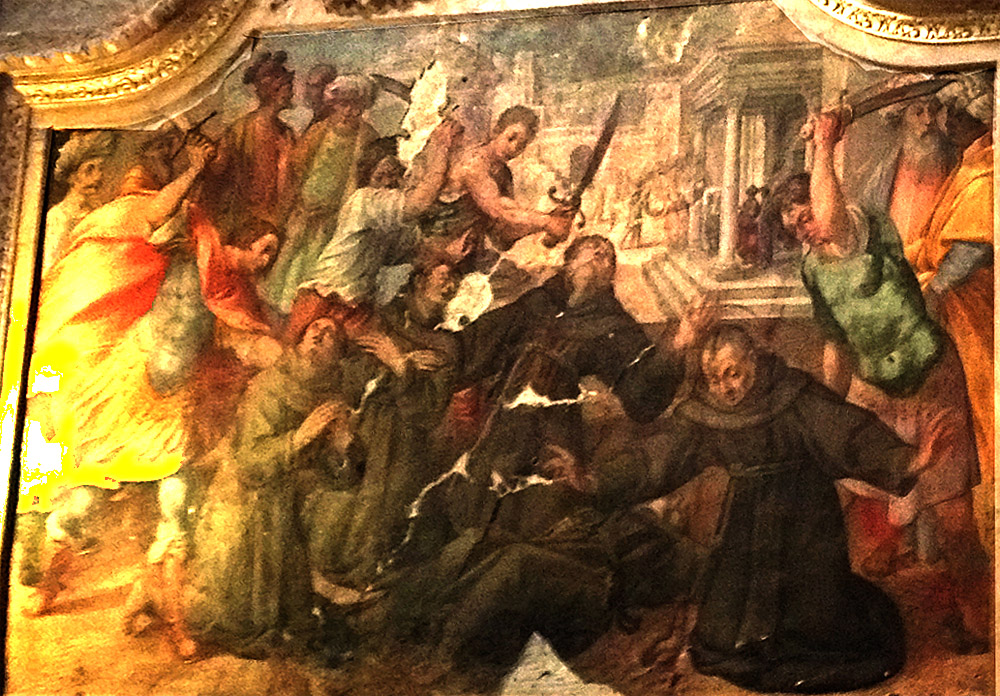The Franciscan Martyrs of Morocco

Chiesa Nuova, Assisi, Italy
In 1219 St. Francis sent five of his religious brothers to preach the faith in Morocco, where they suffered martyrdom. Their adventures are related in a Passio compiled from various sources in the third volume of the Analecta Franciscana (579-96).
In 1219 the historical Caliph of Morocco was only 16 years old and under the tutelage of his adult relatives, but the text imagines him as completely in charge. At first he reacts to the Franciscans' preaching by sending them back to Europe, but they keep returning and preaching an uncompromising call to Christ and denunciation of Islam. He imprisons them without food or water, he has them tortured, he offers them women and wealth if they will convert, all to no avail. At last, on January 16 of the following year, he kills them with his own sword and hands the bodies over to the mob to be kicked around and mutilated.
The painting in Assisi departs from the Passio by showing the five brothers assassinated by a whole crew of Saracen soldiers rather than just the Caliph. But the soldier on the far right is attacking the kneeling brother in the way the Caliph killed them all, cleaving their heads in two with his sword.
The historical Caliph's name was Abū Yaʿqūb Yūsuf al-Mustanṣir. The Passio calls him "King Aboiacob" and "Miramolinus," the latter a latinizing of one of his honorifics. The martyrs' names were Beraldus, Peter, Adiutus, Accursius, and Otho. They are of course pictured in their brown Franciscan habits with the triple-knotted rope cinctures.
View this image in full resolution.
Photographed at the church by Claire Stracke, shared under Attribution-NonCommercial-ShareAlike license.